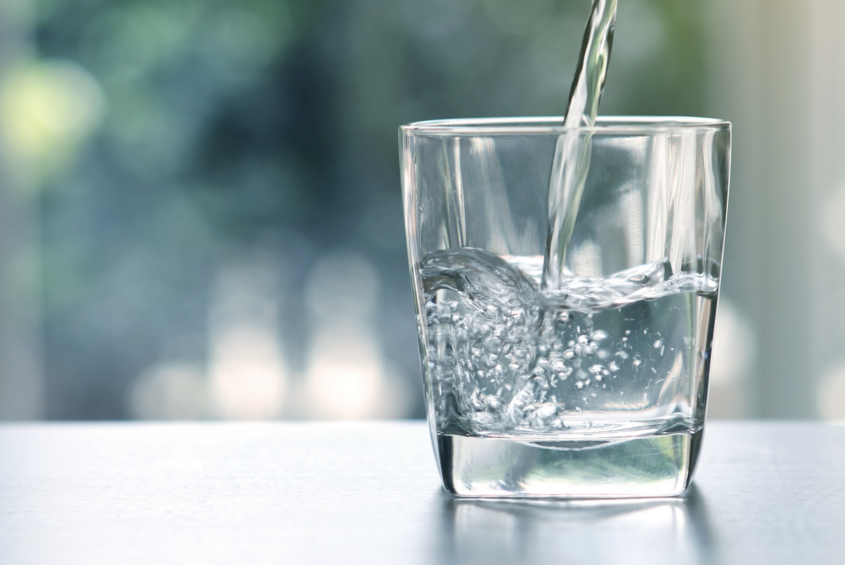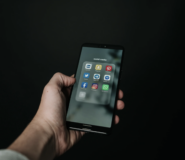Did you know the sense of thirst dims with age? Dehydration also reduces blood volume, creating thicker, more concentrated blood which stresses the heart. This decreases the ability to transport oxygen and nutrients to the muscles and other living cells. – so it’s important that seniors are drinking plenty of water! Here are more reasons why this should be top of mind:
- You need water for digestion.
- Coffee in amounts normally consumed can help hydrate your body (though water is by far ideal since it has zero calories and lacks added creams or sugar).
- An increased concentration of particles in your blood triggers the sensation of thirst. You are seriously dehydrated when you have lost 5% of your body weight.
- Body water absorbs heat from your muscles and sweat dissipates heat.
- Water can reduce constipation and help with urinary tract infections.
- You can monitor your water intake by the volume of your urine. Pale and clear means you’re well hydrated. If your urine is scanty, dark or smelly, you should drink more. If you have not urinated during your work day or in a 7-hour period, you are severely dehydrated.
- Bottled water is not always better than tap. Nearly ½ of bottled waters come from municipal water supplies, not the mountain streams on the labels. Rather than spend money on bottled water, turn on your tap. This will help stop the flood of 95 million plastic water bottles that are discarded, of which only 20% are recycled.
- Water helps your body keep your temperature normal.
- Water helps your body lubricate and cushion joints.
- Water helps your body protect your spinal cord and other sensitive tissues.
- Water helps your body get rid of wastes through urination, perspiration, and bowel movements.
- Chronic joint pain, headaches and gastric ulcers can often indicate dehydration. Water is needed to carry acidic waste away from cells, and when we’re dehydrated, these wastes don’t get carried away, leading to our nerves interpreting the acidic waste as pain.
- Our bodies are over two-thirds water. Even our bones are composed of more than 20% water! We need water to keep our bones healthy too.
- Loughborough University found that a mere 5% drop in water levels in the body can cause a 25-30% loss in energy. Even a 3% drop can cause fuzzy thinking, “brain fog” and a slower metabolism.
- A University of Connecticut’s Human Performance Laboratory found that even a 1.5% water loss led to reduced cognitive function, headaches and fatigue.
- Allergies and asthma can be linked to dehydration. When the body is dehydrated, histamine begins to ration water, which in turn increases histamine and the allergic response and lowered immunity. Chronic dehydration triggers a histamine release in asthma sufferers, which leads to inflammation and bronchial constriction.
- How much should you drink per day? A good basic rule of thumb is to take your body weight (in pounds) and divide it by 2. This is the number of ounces of water that you should be drinking each day.
- A person who perspires heavily will need to drink more than someone who doesn’t. Certain medical conditions, such as diabetes or heart disease, also may mean you need to drink more water. People with cystic fibrosis have high concentrations of sodium in their sweat and also need to use caution to avoid dehydration. And some medications can act as diuretics, causing the body to lose more fluid.
- Thirst isn’t the best indicator that you need to drink: If you get thirsty, you’re already dehydrated.
- “For every pound of sweat you lose, that’s a pint of water you’ll need to replenish,” John Batson, M.D, a sports medicine physician with Lowcountry Spine & Sport in Hilton Head Island, S.C., and an American Heart Association volunteer.
- John Batson, M.D, a sports medicine physician with Lowcountry Spine & Sport in Hilton Head Island, S.C., and an American Heart Association volunteer says drinking water before you exercise or go out into the sun is an important first step. “Drinking water before is much more important,” he said. “Otherwise, you’re playing catch-up and your heart is straining.” Sitting in the sun on a hot or humid day, even if you aren’t exercising, can also cause your body to need more fluids. Keep in mind that you can become dehydrated in cold weather, too!
- Per US National Library of Medicine National Institutes of Health, the incidence of urinary tract infections (UTI) hospitalization is increasing and is seasonal, peaking in the summer. In the United States, UTIs result in an estimated 7 million office visits and 1 million emergency department visits.
- Per US National Library of Medicine National Institutes of Health, incidence rates accelerated with advancing age: the growth rate for 80- to 89-year-old women was 23.1% (compared to 7.9% growth rate for 18- to 29-year-old women).
- Another way to consume water is to have a cup of low-fat soup as an afternoon snack.
- Drink a full glass of water if you need to take a pill.
- Individuals with dementia may forget to eat and drink, and in more advanced stages may have difficulty swallowing.
- Drugs like diuretics, antihistamines, laxatives, antipsychotics, and corticosteroids can cause frequent urination that depletes water and electrolytes.
- Signs of severe dehydration: Dry skin that stays folded when pinched, low blood pressure, weak pulse, cold hands and feet, and rapid breathing and heartbeat.
- Alternatives to plain water: water enhancers, opting for pre-flavored waters, serving a half water half juice mixture, or fruit-infused water. Consider both savory and sweet flavors. Warm chicken, beef or vegetable broth can provide a soothing savory source of fluids and electrolytes that seems more like a “meal” and less like a drink. For those who are fond of sweets, popsicles, milkshakes and smoothies may be more enticing options that function as a sweet vehicle for fluids. Raw fruits and vegetables can pack a hydrating punch as well. For example, a small plate of cut vegetables, like celery sticks, cucumber slices, cherry tomatoes and bell pepper slices served with a healthy dressing or hummus for dipping can be a nutrition- and fluid-filled snack. Cucumber, tomato, watermelon, bell pepper, grapes, cantaloupe, orange, blueberries, apples.
- Drinkware can be an important component as well. Someone with low vision might be not able to see a clear glass well; try an opaque, brightly colored cup so he/she can see it more easily and therefore drink from it more often.




